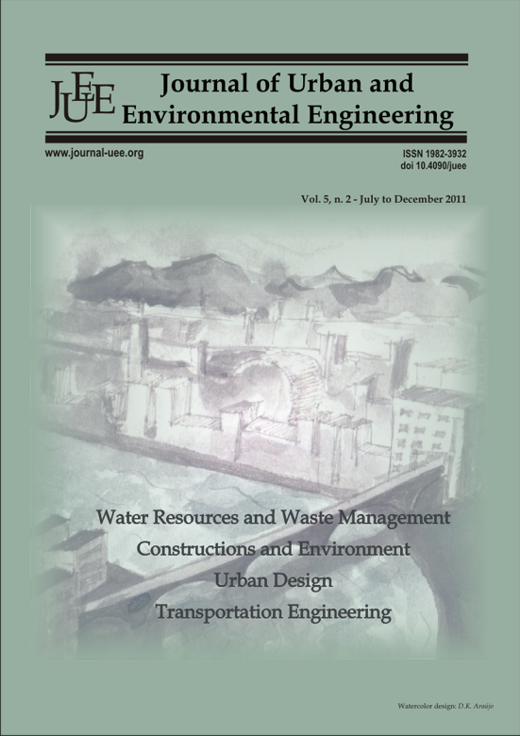INFLUENCE OF THE CATCHMENT DISCRETIZATION ON THE OPTIMIZATION OF RUNOFF-EROSION MODELLING <a href="http://dx.doi.org/10.4090/juee.2011.v5n2.091102">(doi: 10.4090/juee.2011.v5n2.091102)</a>
DOI:
https://doi.org/10.4090/juee.2011.v5n2.%25pKeywords:
Discretization, optimization, runoff-erosion modeling, semiarid areaAbstract
In this application-based study, the influence of the catchment discretization on the optimization of runoff-erosion modeling using a particle swarm optimization to a physically-based erosion model named WESP (Watershed Erosion Simulation Program) is conducted. This study is carried in the semiarid region of Brazil, more precisely in a micro-catchment (MCN3) of Sumé Experimental Basin. A comparative assessment is done by statistical analysis and mean relative error (MRE) in order to evaluate the performance of the optimization technique when discretizing the catchment in different ways. Thus, the catchment is represented in three ways of discretization (i.e., n1 = 4 elements, n2 = 10 elements and n3 = 23 elements). The difficulties involved in calibration of physically-based erosion models have been partly attributable to the lack of robust optimization tools, hence several robust optimization techniques have been proposed in the past years; however, the way the catchment is represented could interfere on the results. Thus, this paper presents the essential concepts of the runoff-erosion WESP model, the global optimization method known as Repulsive Particle Swarm (RPS), and the optimization results using the three catchment discretization. The results show that there are small differences among the calculated sediment yield using the three ways of basin discretization, although the 23 elements division seems to give the best results.Downloads
Download data is not yet available.
Downloads
Issue
Section
Articles




